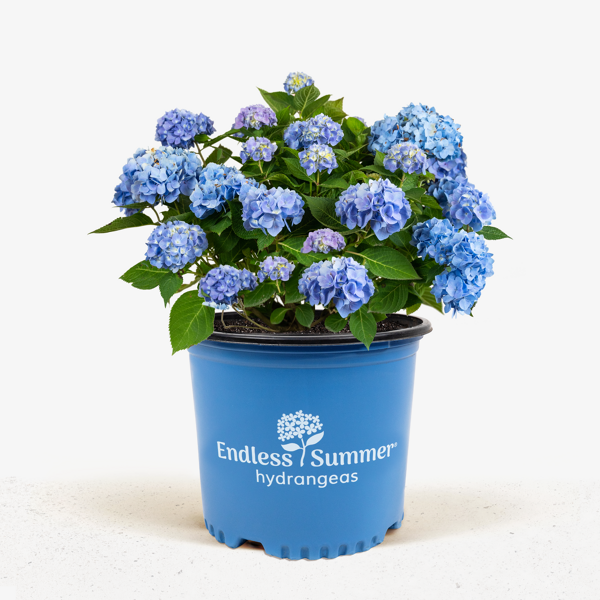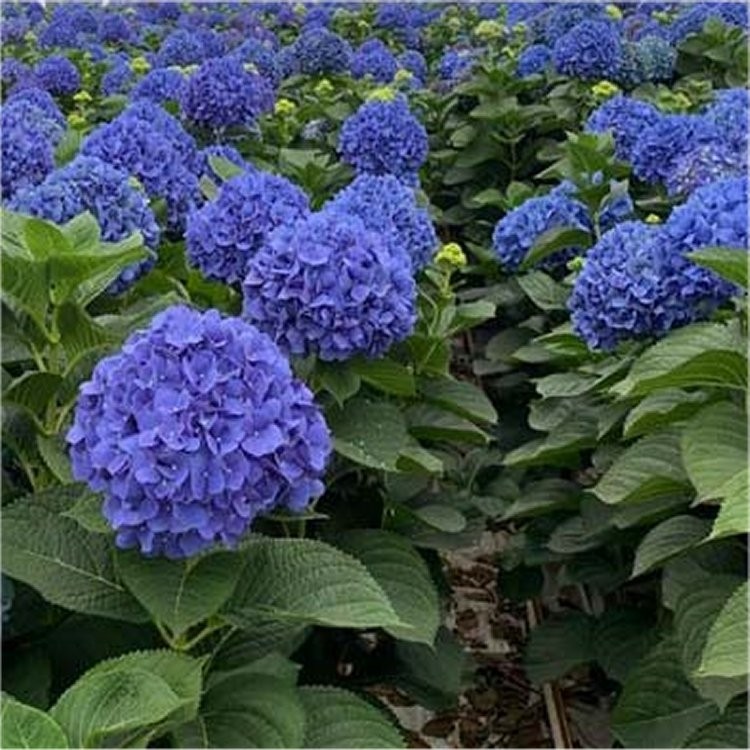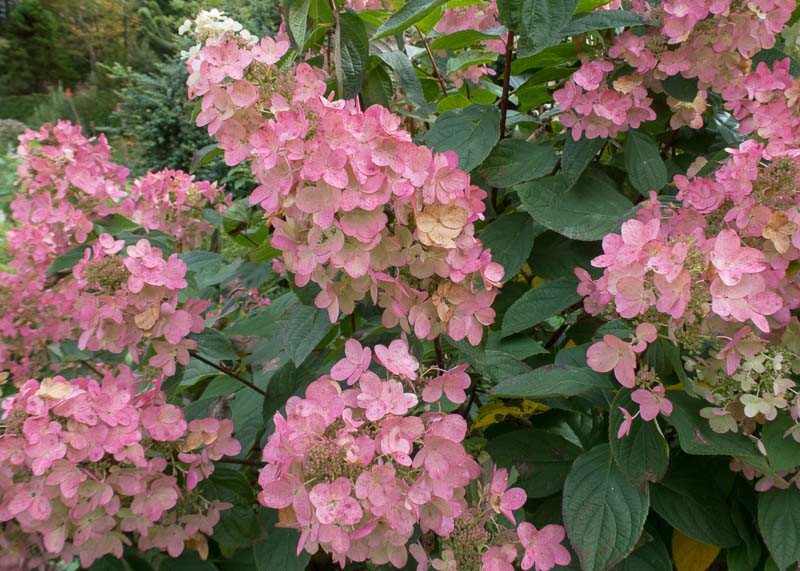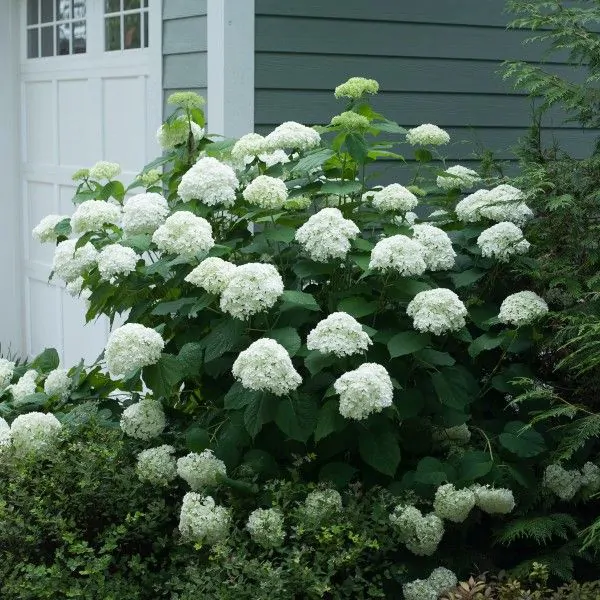How To Grow Hydrangea Ericaceous For Stunning Blooms
Title: How to Grow Hydrangea Ericaceous for Stunning Blooms
Introduction:
Hydrangeas are beautiful flowering shrubs that can add a touch of elegance to any garden. They come in a variety of colors, including blue, pink, white, and purple. Hydrangea ericaceous are a type of hydrangea that prefers acidic soil. This makes them a bit more challenging to grow than other types of hydrangeas, but it's worth the effort when you see their stunning blooms.
In this blog post, I will discuss the basics of growing hydrangea ericaceous. I will cover topics such as choosing the right location, planting, watering, fertilizing, and pruning. I will also provide some tips on how to get the most vibrant colors from your plants.
Main Content:
Choosing the Right Location
Hydrangea ericaceous prefer acidic soil with a pH of 5.5 to 6.0. They also prefer partial shade. If you live in a hot climate, you may want to plant your hydrangea ericaceous in a spot that gets morning sun and afternoon shade.
Planting
The best time to plant hydrangea ericaceous is in the spring or fall. When planting, dig a hole that is twice as wide and as deep as the root ball of your plant. Amend the soil with peat moss or other acidic compost. Place the plant in the hole and backfill with soil, tamping it down gently. Water the plant thoroughly.
Watering
Hydrangea ericaceous need to be watered regularly, especially during the first year after planting. Water deeply, so that the water reaches the roots. Allow the soil to dry out slightly between waterings.
Fertilizing
Hydrangea ericaceous should be fertilized once a month during the growing season. Use an acidic fertilizer, such as an azalea or rhododendron fertilizer. Follow the directions on the fertilizer label.
Pruning
Hydrangea ericaceous do not need to be pruned heavily. However, you may want to remove any dead, diseased, or damaged branches in the spring. You can also prune the plant to shape it. If you want to encourage more blooms, you can prune the plant after it blooms in the summer.
Getting Vibrant Colors
The color of hydrangea ericaceous blooms is affected by the pH of the soil. In acidic soil, the blooms will be blue. In alkaline soil, the blooms will be pink. You can change the pH of the soil by adding aluminum sulfate to acidic soil or lime to alkaline soil.
Conclusion
Growing hydrangea ericaceous can be a bit challenging, but it is rewarding when you see their stunning blooms. By following the tips in this blog post, you can successfully grow these beautiful plants in your own garden.
If you are interested in learning more about hydrangea ericaceous, I recommend visiting the website Home Gardening. This website has a wealth of information on this type of hydrangea, including its care requirements, planting instructions, and pest and disease prevention tips. You can also find photos and videos of hydrangea ericaceous in bloom, so you can see what this beautiful plant looks like in your own garden.
FAQ of hydrangea ericaceous
- What is ericaceous compost?
Ericaceous compost is a type of compost that is specifically designed for acid-loving plants, such as hydrangeas, rhododendrons, and azaleas. It is made from materials that are naturally acidic, such as pine needles, oak leaves, and coffee grounds. Ericaceous compost helps to improve the drainage and aeration of the soil, and it also provides these plants with the nutrients they need to thrive.
- Do hydrangeas need ericaceous compost?
While hydrangeas can technically grow in any type of soil, they will do best in acidic soil. If you have alkaline soil, you can amend it with ericaceous compost to create a more suitable environment for your hydrangeas. This will help to ensure that they produce their best blooms.
- How do I use ericaceous compost for hydrangeas?
You can use ericaceous compost when planting hydrangeas, or you can add it to the soil around existing plants. If you are planting hydrangeas, mix the compost into the soil at a ratio of 1 part compost to 3 parts soil. If you are adding compost to existing plants, spread it around the root zone and work it into the soil to a depth of about 6 inches.
- How often should I fertilize hydrangeas with ericaceous compost?
You can fertilize hydrangeas with ericaceous compost once a year in the spring. You can also use a liquid fertilizer that is specifically designed for acid-loving plants.
- What can I do if my hydrangeas are not blooming?
There are a few reasons why your hydrangeas might not be blooming. One possibility is that the soil is not acidic enough. Another possibility is that the plants are not getting enough sunlight. You can test the soil pH with a kit from your local garden center. If the pH is too high, you can amend the soil with ericaceous compost or sulfur. If the plants are not getting enough sunlight, move them to a spot that receives more direct sunlight.
- How do I make my hydrangeas blue?
The color of hydrangea blooms is determined by the acidity of the soil. In alkaline soil, hydrangeas will bloom pink or red. In acidic soil, they will bloom blue. If you want your hydrangeas to bloom blue, you can amend the soil with ericaceous compost or sulfur. You can also add aluminum sulfate to the soil.
- When is the best time to plant hydrangeas?
The best time to plant hydrangeas is in the spring or fall. If you live in a cold climate, you may want to plant them in the fall so that they have time to establish themselves before winter.
- How do I care for hydrangeas in the winter?
If you live in a cold climate, you will need to protect your hydrangeas from the cold. You can do this by covering them with a burlap sack or a layer of mulch. You may also want to prune them back in the fall to make them more compact and easier to cover.
Image of hydrangea ericaceous
- Hydrangea paniculata 'Limelight' is a white hydrangea with lime green blooms. It is a hardy shrub that can grow up to 6 feet tall.

- Hydrangea macrophylla 'Endless Summer' is a blue hydrangea with large, rounded blooms. It is a reblooming hydrangea, which means it will bloom twice in a season.

- Hydrangea quercifolia 'PeeGee' is a pink hydrangea with oak-shaped leaves. It is a hardy shrub that can grow up to 10 feet tall.

- Hydrangea arborescens 'Annabelle' is a white hydrangea with large, lacecap blooms. It is a hardy shrub that can grow up to 6 feet tall.

- Hydrangea serrata 'Bluebird' is a blue hydrangea with serrated leaves. It is a hardy shrub that can grow up to 4 feet tall.

- Hydrangea macrophylla 'Mophead' is a blue hydrangea with large, mophead blooms. It is a hardy shrub that can grow up to 6 feet tall.

- Hydrangea paniculata 'Pink Diamond' is a pink hydrangea with panicle-shaped blooms. It is a hardy shrub that can grow up to 6 feet tall.

- Hydrangea macrophylla 'Nikko Blue' is a blue hydrangea with large, lacecap blooms. It is a hardy shrub that can grow up to 6 feet tall.
- Hydrangea quercifolia 'Snowflake' is a white hydrangea with oak-shaped leaves. It is a hardy shrub that can grow up to 10 feet tall.

- Hydrangea arborescens 'Incrediball' is a white hydrangea with large, round blooms. It is a hardy shrub that can grow up to 6 feet tall.


Post a Comment for "How To Grow Hydrangea Ericaceous For Stunning Blooms"